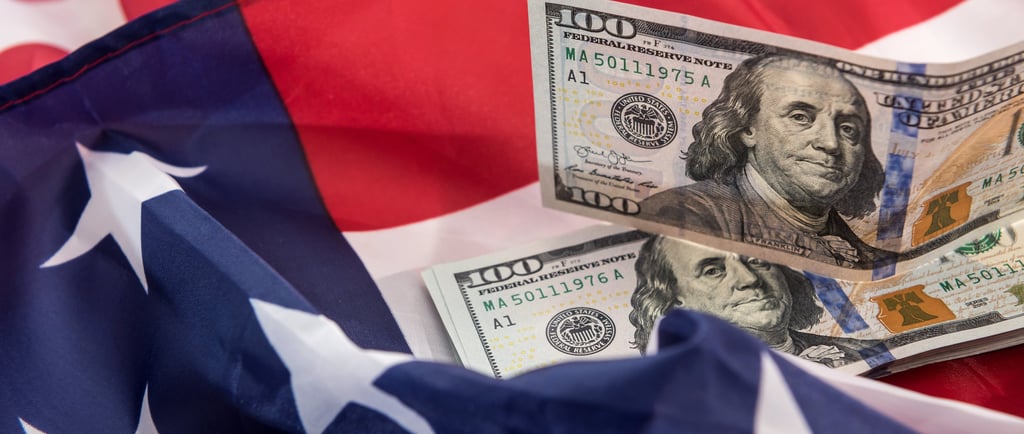The Two Americas: How the Wealth Divide Is Reshaping Middle-Class Ambitions
An honest look at how widening wealth gaps are redefining what it means to be middle class in America today.
Finistack
5/21/20254 min read


In today’s America, you don’t need to be poor to feel like you’re falling behind. For millions of people who identify as middle class, financial stability feels more like a balancing act than a stepping stone. While some are building generational wealth through homeownership, investments, and legacy planning, others are just trying to manage rising rent, groceries, and student debt. As the gap between the “comfortable” and the “stretched” widens, one thing is becoming increasingly clear: we’re living in two economic realities.
What once defined the middle class—a single-family home, a reliable car, a decent savings account, and the promise of retirement—is now becoming harder to achieve, let alone maintain. On paper, many households may still qualify as middle-income. But in reality, they're locked in a cycle of just making ends meet, constantly recalculating how to stretch a dollar in a high-cost world.
The numbers tell a compelling story. According to the Federal Reserve, the top 10% of Americans now hold nearly 70% of the nation's wealth, while the bottom 50% own just 2.5%. Meanwhile, the cost of living has skyrocketed—especially in housing, healthcare, childcare, and education—while wages for middle-income workers have struggled to keep pace. Even a six-figure income no longer guarantees comfort in many cities, particularly as mortgage rates and rental prices climb faster than paychecks.
For many families, financial strain isn't just a numbers game—it’s emotional. The stress of constant economic pressure has led to what some call “financial burnout.” This is especially true for those in the “striving class”: households earning decent incomes who are expected to save for retirement, fund their children’s education, pay off debt, and plan for emergencies, all while dealing with inflation and an unpredictable job market. The emotional burden of not feeling secure—despite doing everything “right”—is causing a quiet crisis in confidence.
In response, middle-class ambition itself is changing. Success is no longer solely defined by upward mobility or material wealth. Instead, many are redefining what it means to “make it.” For younger generations especially, financial flexibility, quality of life, and mental health are becoming more important than traditional markers of prosperity. Some are choosing to rent long-term instead of buying homes, to travel instead of build assets, or to work fewer hours in exchange for a healthier lifestyle.
This shift is not just individual—it’s cultural. As the wealthiest Americans operate in an entirely different economic universe—sending their children to private schools, investing in portfolios, hiring estate planners—middle-class families are often left navigating a system that no longer feels designed for them. This divide isn’t just about money. It’s about what’s considered normal, what’s considered achievable, and what people feel they deserve for their efforts.
At the same time, the illusion of wealth on social media only worsens the emotional impact. Many people scroll through posts filled with luxury vacations, home renovations, and early retirements, wondering why they can’t seem to get ahead despite working full time. In this environment, financial insecurity doesn’t just lead to stress—it can lead to shame.
So, is the middle class still a launchpad to success—or has it become a trap of constant survival? The reality is nuanced. Upward mobility is still possible, but it’s more dependent on access to education, generational wealth, and a bit of luck than ever before. Many middle-class families are also increasingly reliant on debt—not to live extravagantly, but just to maintain a modest standard of living. Credit cards, personal loans, and student debt often fill the gap between income and actual expenses.
Generationally, the contrast is stark. Baby Boomers were able to accumulate wealth through relatively affordable housing and stable pension plans. Meanwhile, Millennials and Gen Z face a more precarious landscape—marked by gig work, delayed homeownership, and retirement systems that put the full burden on the individual.
But this story isn’t all bleak. There’s a growing movement toward awareness and resilience. Americans are getting smarter about their money, pushing for policy change, and embracing new definitions of financial success. There’s more emphasis on budgeting, saving early, investing modestly, and prioritizing well-being over appearances. Tools like personal finance apps, side hustles, and community-based planning are helping people regain a sense of control—even if the system itself hasn’t caught up yet.
To truly rebuild the middle class, we’ll need both cultural and structural shifts. That includes reforms around affordable housing, healthcare, childcare, and student debt. It also means making financial literacy more accessible and moving away from glorifying hustle culture. A sustainable version of the American Dream still exists—it just looks different from the one we grew up with.
If you’re working hard, doing your best, and still not feeling ahead, you’re not alone. You’re living in a financial system that has changed faster than most of us could adapt. But recognizing that reality—and talking openly about it—is the first step toward building something better.
Because maybe the question isn’t, “Am I rich?”
Maybe the real question is, “What kind of life am I building—and who gets to decide what success looks like?”
*Disclaimer: This blog may include AI-generated content derived from web crawling, and it features quotes from original cited inline or public sources. The information presented is for general informational purposes only and may not reflect the most current data or information available. While we strive for accuracy, we encourage readers to verify the information from original sources or reach out to a certified financial adviser for important financial decisions.
